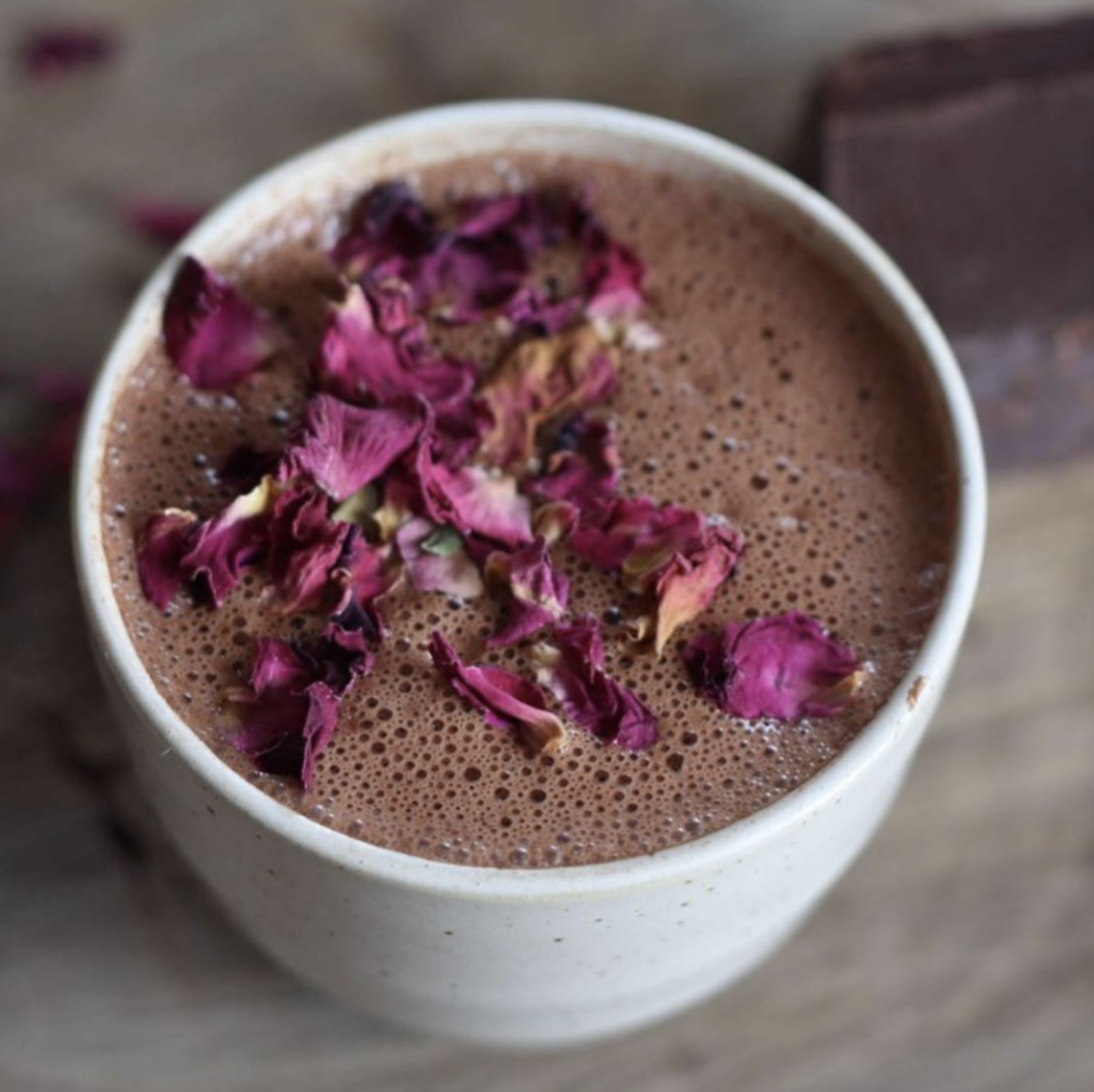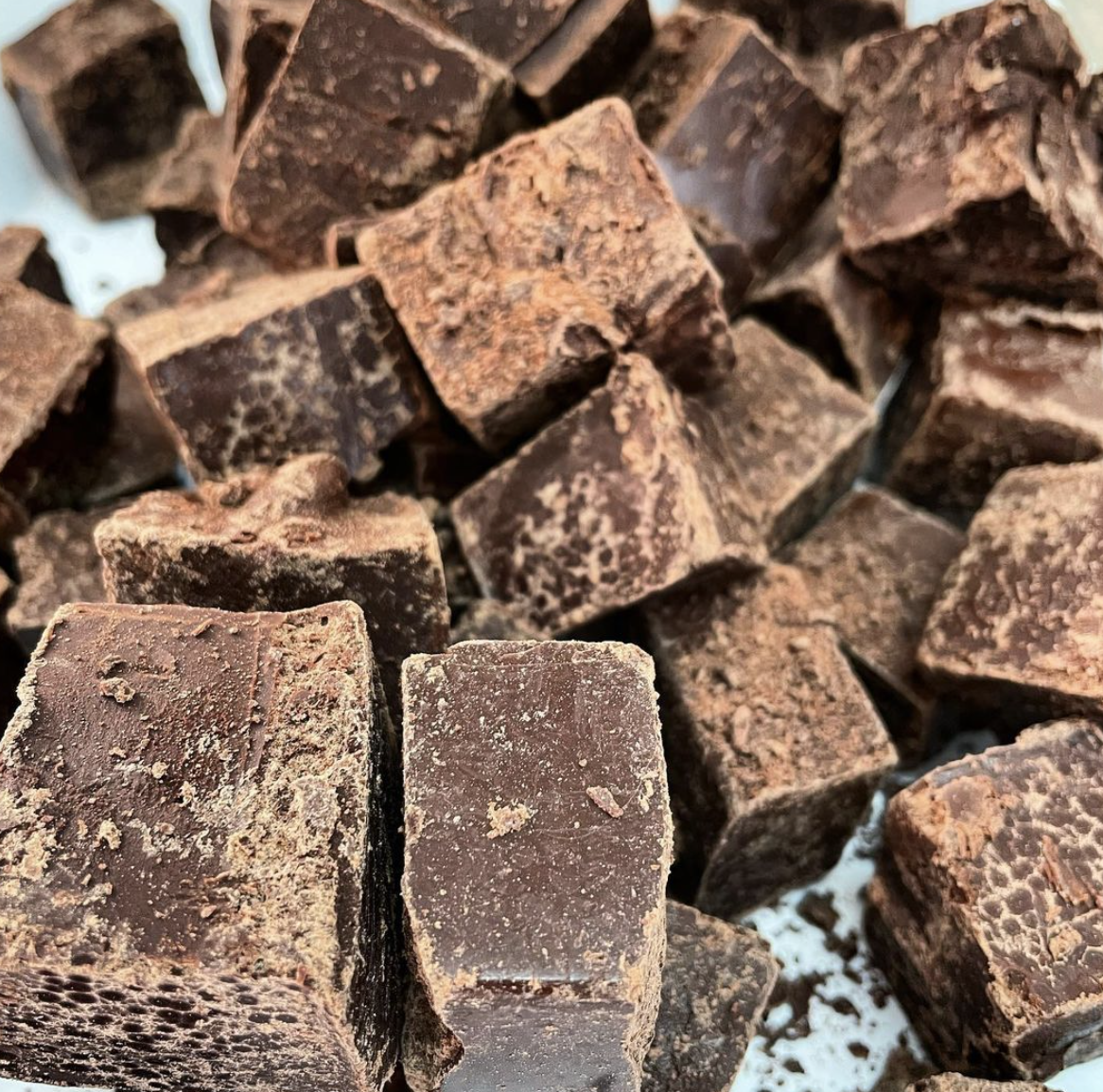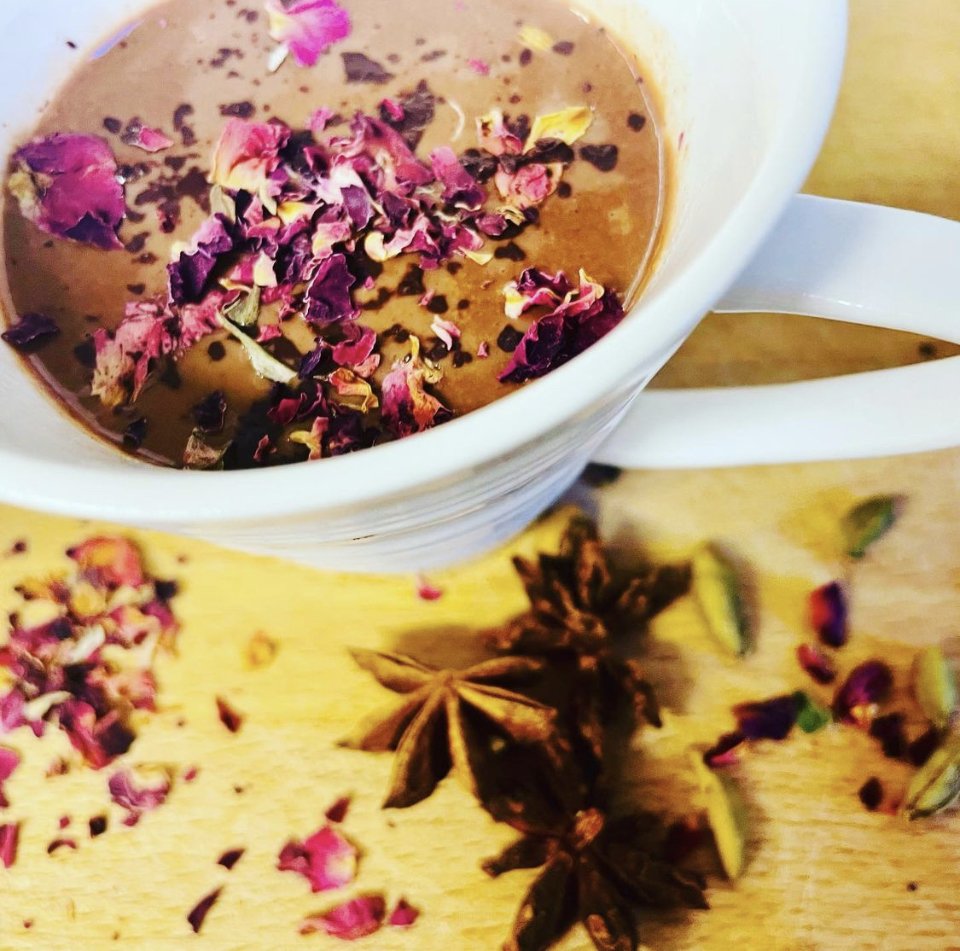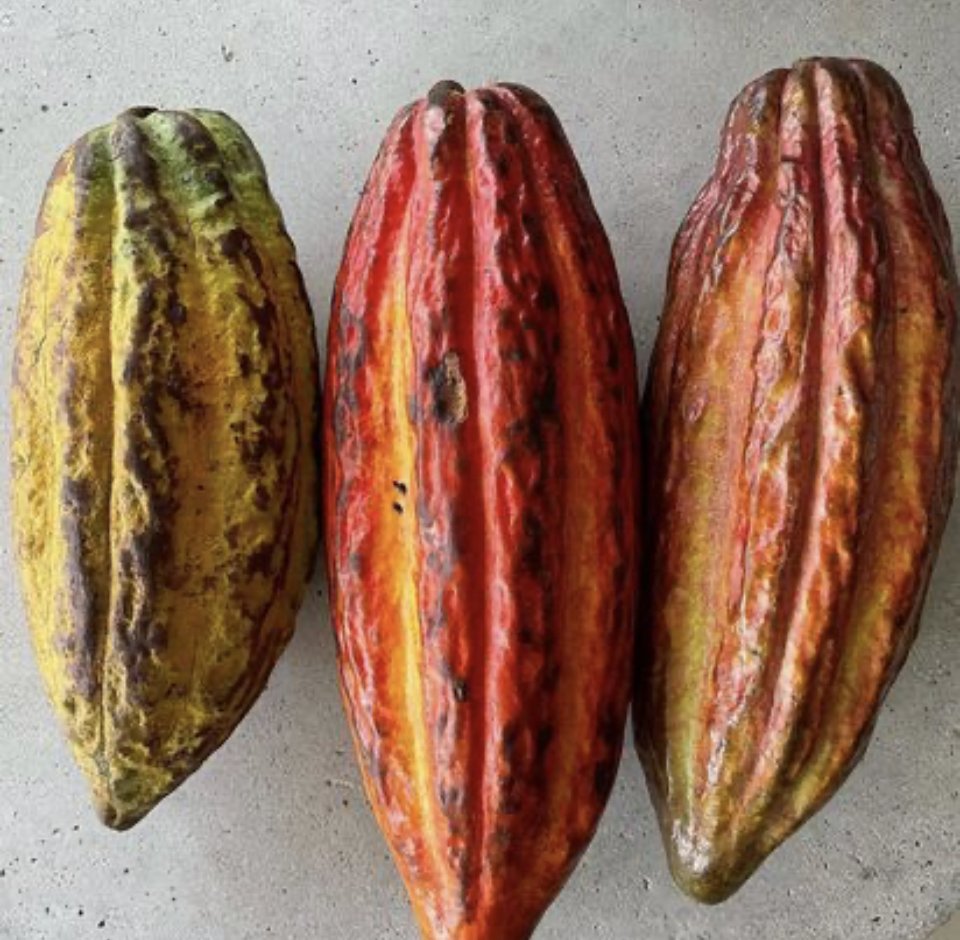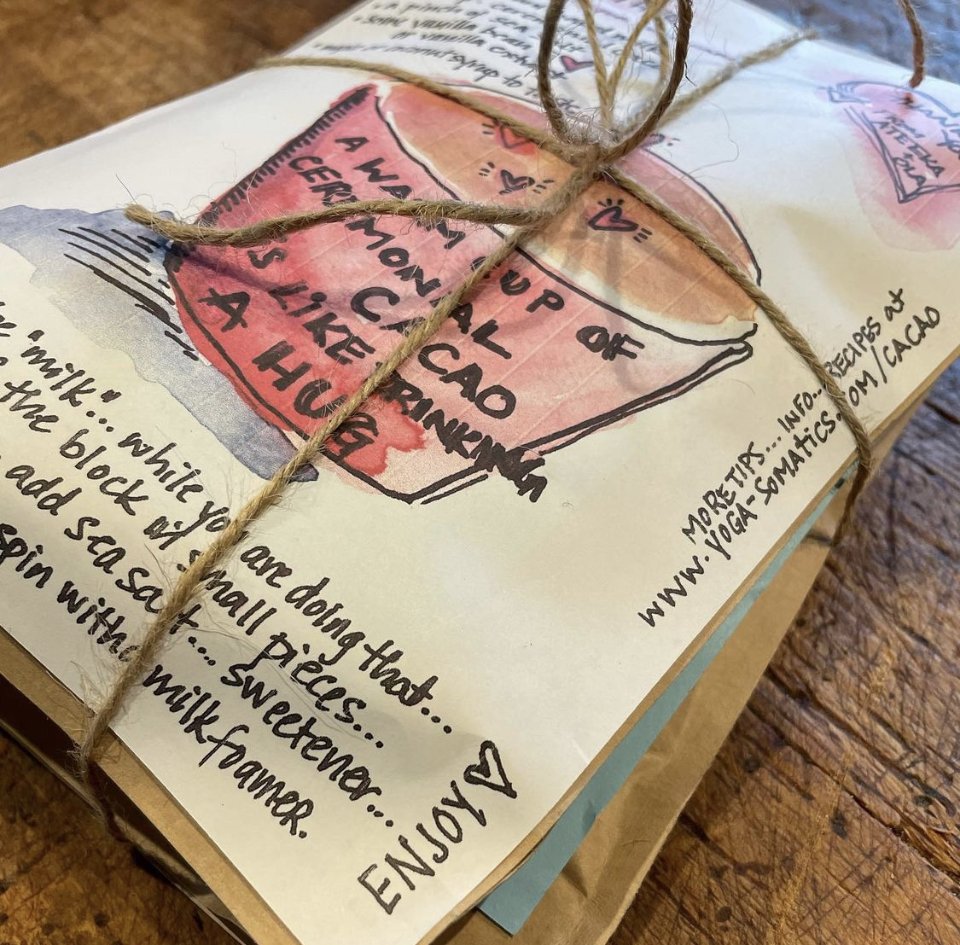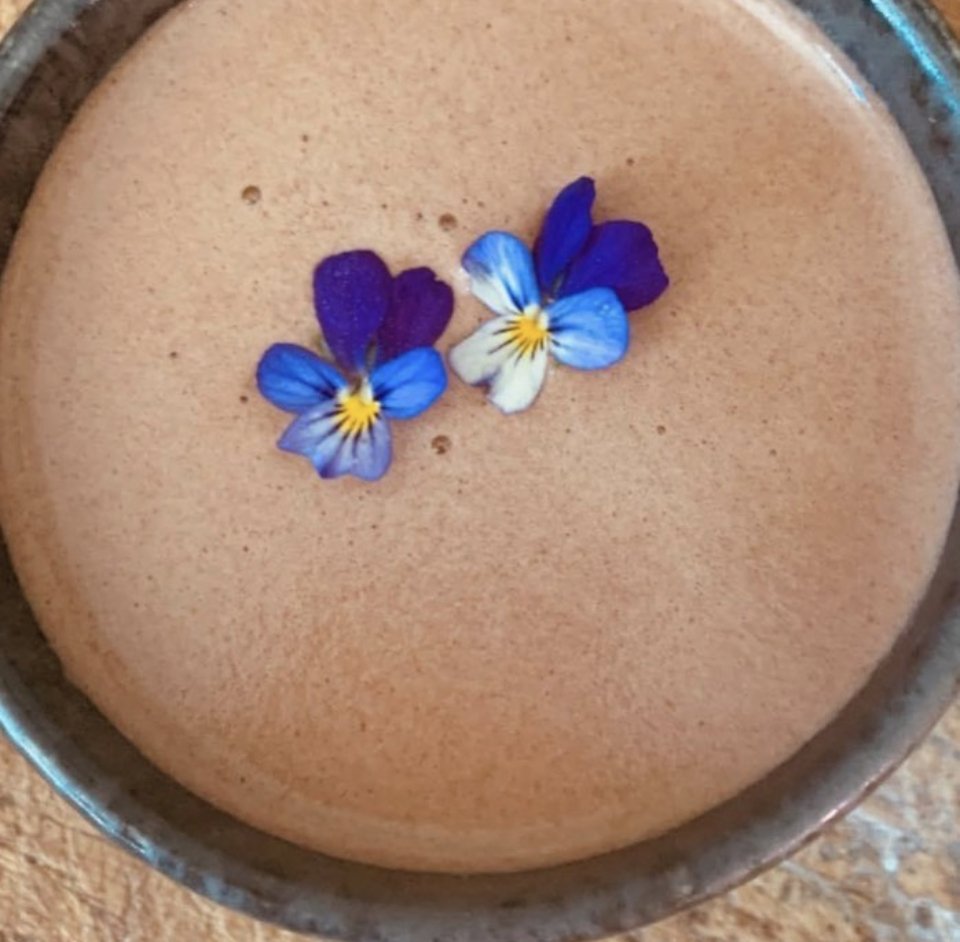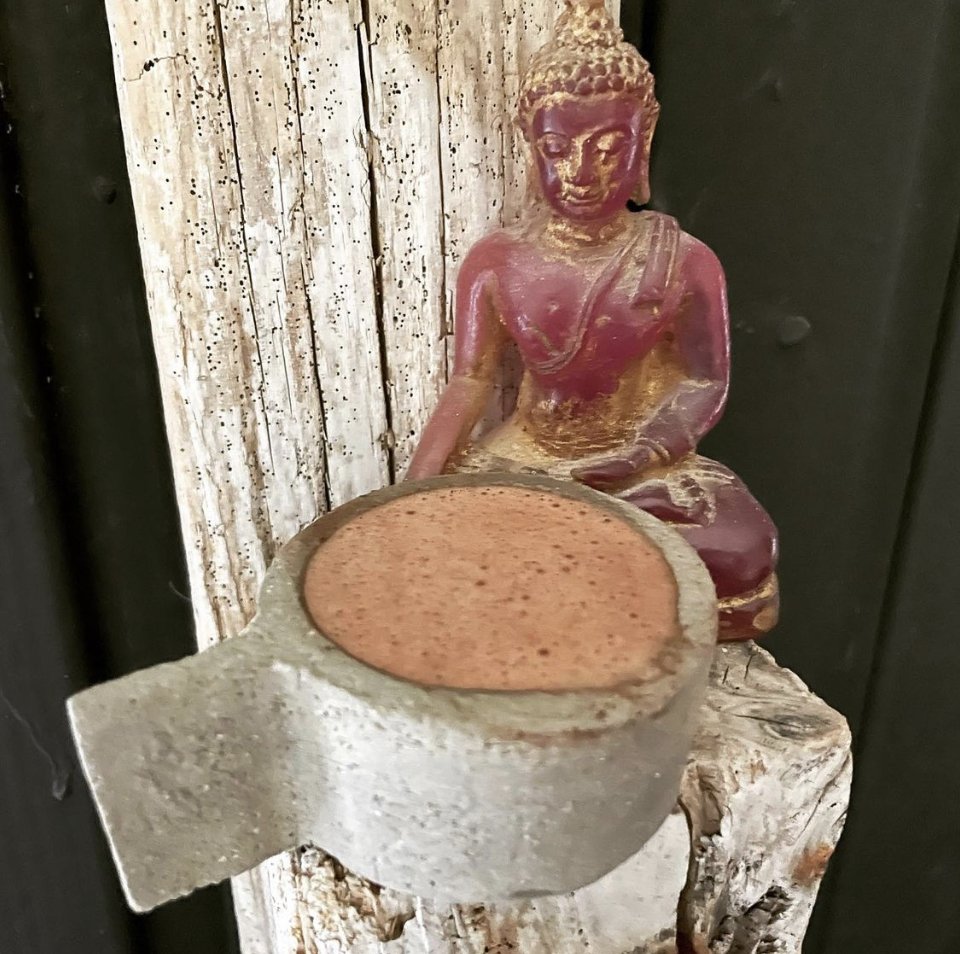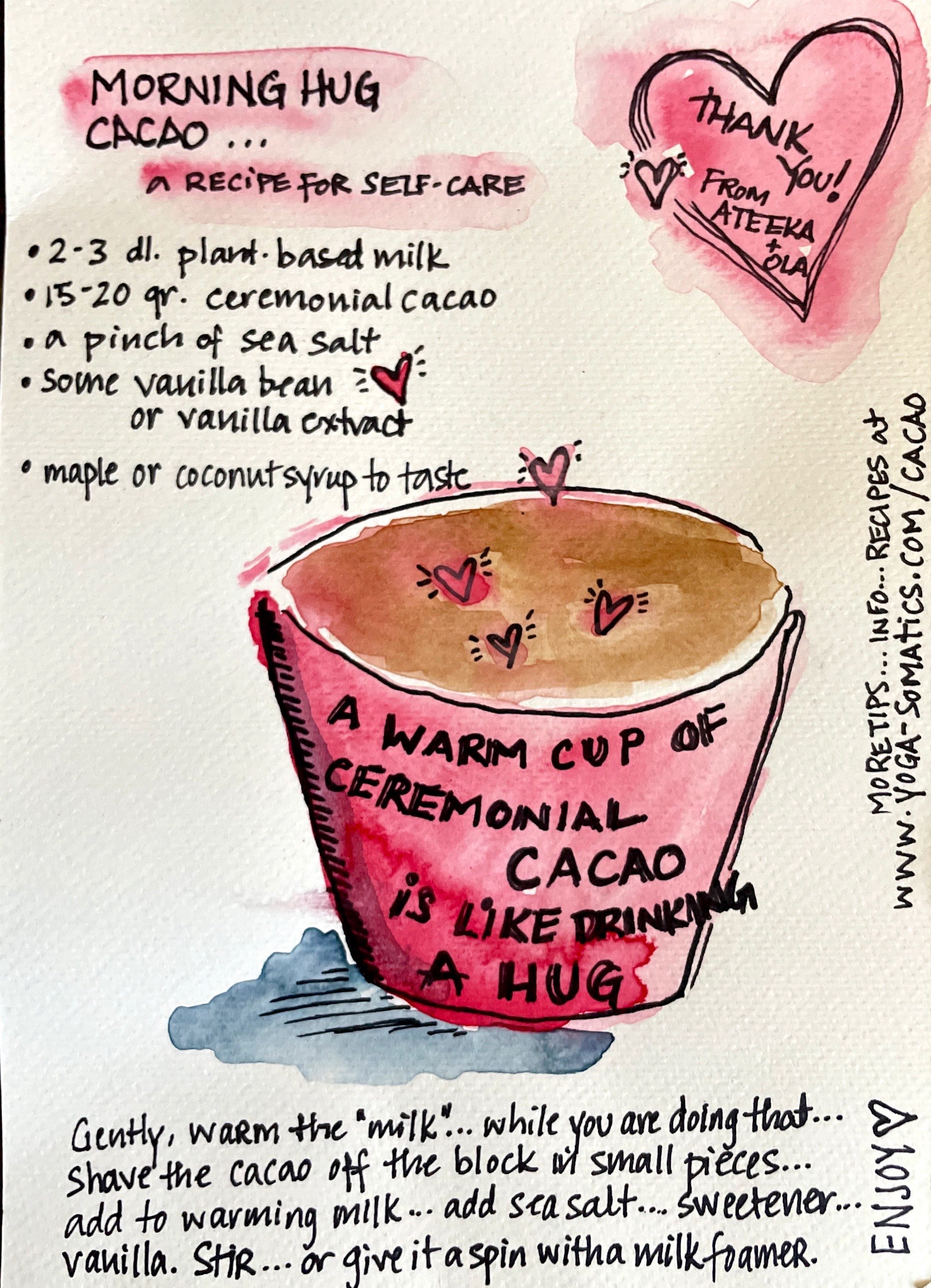






cacao = love
cacao = love
We love ceremonial cacao so much . . . we decided to bring it all the way up to Norway for our health & happiness . . . and yours too!
💕💕💕💕💕
Pure single-origin ceremonial cacao from small family farms across Central America
traceable - sustainable - direct trade from small family farms
Drinking whole food ceremonial cacao is different from both European-style and US-style hot chocolate, because it is made from whole cacao, with no sugar, no cocoa powder, and because it is intended to be used as a delicious opportunity for mindfulness and sensorial enjoyment. Some say that cacao in its purest form it opens the heart, and inspires creativity!
This stone ground cacao is a delicious - full bodied thick drinking cacao that simultaneously relaxes and energizes.
It is pure, nutrient-dense, and minimally processed.

what is ceremonial cacao?
what is ceremonial cacao?
The Ceremonial cacao that we bring to you is a whole-food and a slow- food.
It is 100% artisanal, freshly made,traceable, and prepared in small-batches.
WHY HOLISTIC CEREMONIAL CACAO?
The cacao is roasted gently, and then ground into a paste into a paste (or known as cacao mass). It is then molded into small blocks that we invite you can cut into shavings at home and blend with hot water or your favorite milk/plant milk. . . be sure to add spices you love . . . such as vanilla bean or cardamom or cayenne. Savor slowly, with deep breaths, and let the cacao work its magic.
“Holistic” is, as the name suggests, more than just its physical form: it is a collaboration of intention. Farmers grow the cacao with intention, demonstrating respect for the cacao trees and the ecosystem.
Our friends Elisa and JuanRa hand process the cacao beans in their artisanal workshop in Sardegna, Italy - nurturing each batch with intention, feeling love. And we invite you to prepare and savor this rich, healthful, and magical drink with intention, perhaps before or as part of meditation, after a long day, or anytime you'd like the wonderful feeling of openness and expansion that holistic ceremonial cacao can inspire !
"What is the difference between cacoa drinking powder and ceremonial cacao?"
Cocoa powder is the result of the extraction of the cacao fat from whole cacao beans, which has been discovered in the Netherlands in 1828 by Coenraad J. van Houten. Mr. Van Houten discoverd a way to treat cacao with alkaline salts to make a powdered cacao that was easier to mix for pastry purposes.
Cacoa powder has lost the cacao butter (fat) normally inside of the cacao beans, which has been previously extracted using a press. The darker the cacao powder is, the less cacao butter it has. People sometimes think that the dark color of the cacao powder means more % of cacao contents, but this is not true. Cacao powder, due to it's new form, can't be considered a whole food.

recipes & inspirations
recipes & inspirations
Gorgeous & Rich
Raw Vegan Ceremonial Cacao Brownie with Cacao Coconut Creme Ganache
How about a DENSE raw vegan cake with raw cacao coconut cream ganache & dried flowers! I really love the El Salvador CUYANCUA origin for this recipe (instead of cacao powder) . . . it is round, deep, rich and flavourful!
Creamy Chia Pudding
with Ceremonial Cacao & Dried Rasperries
CACAO for LUNCHTIME!
A rich plant based chia pudding with shaved ceremonial cacao and dried raspberry toppings! The beautiful Guatamala Q´uechi variety is earthy and dark . . . giving the perfect contrast to the sweet pudding and tart dried raspberries.

varieties & taste profiles
varieties & taste profiles
CUYANCUA - EL SALVADOR
Magical and Fragrant CUYANCUA from El Salvador
SINGLE ORIGIN
An intense, dark & fragrant ceremonial cacao from Atecozol, Izalco, a municipality of Sonsonate at 400 meters above sea level in El Salvador.
Aroma: Rum, slightly sweet, with notes of chocolate and caramel.
Flavor: Intense, dark, earthy flavors initially, with upfront bitterness.
The flavor notes develop into green and floral notes reminiscent of orange blossom and jasmine.
Cuyancua comes from a single family farm where fine flavor trinitario acriollado and DNA test-confirmed criollo cacao trees grow underneath the tropical rainforest canopy, in community with other plants such as mango, banana, star apple, avocados, oranges, tropical flowers, vanilla, and cinnamon.
The region where the farm is located used to be an indigenous settlement thousands of years ago. While walking or working on the land, one can easily find carved obsidian objects and small pieces of pottery scattered around, left by the people who called this home before we did.
NAHUA - COSTA RICA
A limited edition single-origin cacao from the micro-region of Nahua, Costa Rica.
SINGLE ORIGIN
Flavor Profile: Very balanced, featuring strong notes of cacao, yellow fruit and warm cherry aromas.
A subtle hint of grapefruit and full-bodied caramel notes.
Social Impact: Nahua is Costa Rica’s leading fine flavor single origin cacao provider, with a strong social mission of improving farmer livelihoods and conserving the environment. The organization is B-Corp certified and works directly with local farming families to grow some of the best trinitario hybrid cacaos available. We rely on their diligent work in handling the crucial post-harvest processes, which ensure the very best outcome for these flavorful beans. Nahua is made up of a network of 430 smallholder cacao farming families, in an area of 800 acres across Guatuso and Upala in the northern part of the country, between the Caño Negro Wildlife Reserve and the Cordillera de Guanacaste mountain range. This area is named for the region’s original inhabitants, an indigenous tribe known as the Maleku, who still reside in the area.
Nahua founder Juan Pablo has been an active pioneer and mentor not only locally in Costa Rica, but also throughout Central America’s cacao farming community, by sharing his experience at regional seminars and through ongoing friendly advice. We have expanded our knowledge of agricultural practices thanks to him, and have also benefited from his excellent example of how to create added value to the cacao crops by transforming the magical fruits of the cacao trees into top quality sustainable products. Power to the people!
Q'EQCHI - GUATAMALA
Gorgeous Guatamala - from FEDECOVERA, Alta y Baja Verapáz, cooperatives managed by indigenous groups of Guatemala Q'eqchi 'and Pocomchi.
BIO CERTIFED ORGANIC
Flavor Profile: Warm and full-bodied with notes of cocoa, cardamom and dried fruit
Aroma: Ripe cherries, cocoa, cardamom, cream.
Rainforest collaboration: The magical cacao beans in Q’Eqchí Holistic Ceremonial cacao come from deep in the rainforest in Guatemala, from FEDECOVERA -- the Federation of Cooperatives of Coban, Alta and Baja Verapaz -- an association of 40+ cooperatives made up by approximately 31,000 Qʼeqchiʼ and Pocomchi farmers. The federation is one of Guatemala’s leading reforestation organizations, and they are recognized worldwide for their production of organic cardamom. They have been leading by example since 1976, fulfilling their mission to provide a way for farmers to improve their living conditions while honoring and protecting their culture and ecosystem.
Farming families produce and export diversified crops which range from cacao to coffee, cardamom, pepper, and turmeric, across the Mayan rainforest canopy of northern Guatemala. Their delicious cacaos are certified organic and consist of a blend of criollo and trinitario strains.
LENCA - EL SALVADOR
LOVELY LENCA is grown, harvested, fermented and dried in the family run Hacienda La Carrera, Jiquilisco area, El Salvador
Flavor Profile: Warm and full-bodied with notes of mango, coconut, plums
Aroma: the roundness of milk chocolate comes through on the nose
Plantation: La Carrera, El Salvador
Collection: March 2021 - May 2022
Traceability: Direct Trade, cocoa purchased on the plantation
Varieties of cocoa: Fino de Aroma - local genetics, very acriollado
This cocoa was grown, harvested, fermented and dried in the Hacienda La Carrera, Jiquilisco area, El Salvador. Family run, it is located near dense mangroves; for years it has served as an impeccably managed nature reserve, to the point of becoming a national environmental resource where animal species live which in other areas of the country are already extinct. Its cocoa, a local genetics, is particularly known for its sweet fruity flavor.

benefits of pure cacao
benefits of pure cacao
Ceremonial Cacao is a superfood . . . and can be enjoyed as a food and a beneficial helper to your health and well-being.
Loaded with good healthy minerals
Magnesium Supports the heart, nervous system and muscles
Iron- Supports the blood and immune system
Chromium- Balances blood sugar levels
Manganese- Assists iron in the oxygenation of the blood
Zinc- Immunity, sexual health and skin
Calcium- Supports bone health, Muscle contraction, heart health and nerve health.
Copper- Helps to build healthy blood and strong immunity
Phosphorus- For the formation of bones and teeth
Potassium- Electrolyte for nerves to function and muscles to contract.
Antioxidants:
Cacao has been found to have a much higher antioxidant capacity per serving, than black tea, green tea or red wine. Cacao Polyphenols are far greater than synthetic antioxidants and has consistently shown protection against oxidation and buffer free radicals in both vitro and in vivo studies.
Psychological effects:
Phenylethylamine- Is found in abundance within cacao when it hasn’t been over-heated. PEAs are a major class of chemicals that we produce in our bodies when we fall in love. PEAs also play a role in increasing focus and attention.
A group of biologically active constituents have been identified in cacao and appear to be related to anandamine, the “internal bliss” chemical, which is a cannabinoid endorphin that the human body naturally produces after exercise.
Tryptophan- Cacao powder can contain between 0.2 – 0.5 percent tryptophan. Tryptophan is an amino acid essential for the production of serotonin, our primary neurotransmitter which helps us build up our stress defence shield and makes us feel good.
Physical Benefits:
Teeth- Theobromine, like caffeine, but not anywhere near your average coffee drink. Cacaos caffeine content is sitting at about 1/20th of the caffeine present in conventional coffee. Theobromine is an effective antibacterial substance that kills streptococcus mutans, the common bacteria that causes decay in teeth. In vitro experiments, polyphenols and tannis from cacao interfered with glucosyltransferase activity of streptococcus mutans and reduce plaque formation.
Digestion- Cacao has been shown to increase bifidobacterial and lactobacilli microflora and reduced constipation in paediatric patients. Cacaos high flavanol and fibre content has beneficial effects on the metabolism and cleansing of the colon.
Brain/Heart health- Swedish women reviewed over a 10yr period suggested that their high cacao consumption reduced their risk of stroke. Human studies suggest cacao consumption may have clinical benefits for dementia, stroke, and being associated with a significant increase in brain blood flow velocity. Cacao has amazing heart benefits, with studies supporting its use in helping the heart muscles to pump blood more effectively and reducing the risk of Myocardial ischemia due to its many cardioprotective traits.

history of cacao
history of cacao
maybe cacao can save the rainforest . . .
CACAO has been a part of ancient mesoamerican cultures for thousands of years. The trees themselves originated in present day Central America and Mexico, where the Mayas, Incas and Aztecs considered it a “food of the gods” and used it for health purposes and in rituals.
Cacao is derived from the abundant seeds of a pod shaped fruit of an mesoamerican rainforest tree. The beautiful tree, which loves to grow in the shade of the rainforest canopy bears fruit the whole year through. With pods maturing at different times and even different colours on the same tree. The beautiful orchid like Cacao flowers develop into a pod fruit about 7-8 inches long, which leisurely ripen in about 6 months.Each pod can containing up to 50 almond shaped seeds, or beans. From these beans is begun the process of making cacao mass.
There are many types of cacao beans growing throughout the world but there are 3 varieties that are mainly used for making chocolate products:
Criollo –“native”
Forastero – “foreign”
Trinitario – “sent from heaven”
